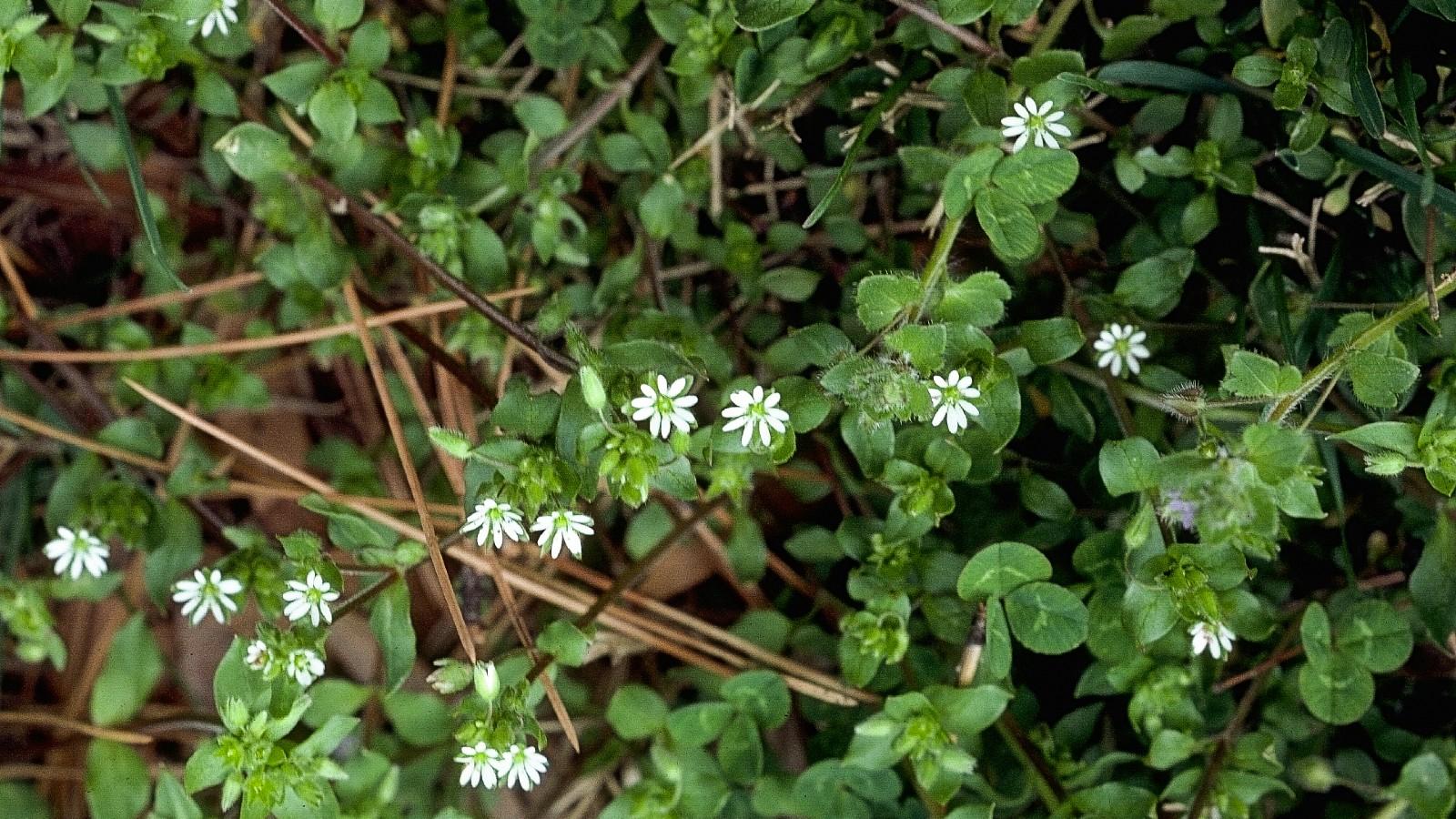Life cycle
Common chickweed (Stellaria media) is a winter annual that has smooth stems and leaves; can have several generations a year during cool wet seasons and forms prostrate dense patches in turf, landscape, and vegetable gardens.
Similar species of chickweed include:
- Mouseear chickweed (Cerastium vulgatum) is a perennial with hairy stems and leaves; stems root at the nodes and can form dense mats or mounds of stems and leaves; flower petals are about the same size as the sepals.

- Field chickweed (Cerastium arvense) is perennial with shorter hairs on the stems and leaves; has more linear leaves and the flower petals are 2-3 times longer than the sepals.

- Sticky chickweed (Cerastium glomeratum) is an annual with sticky hairs on the stems and leaves.

Growth habit
Common chickweed grows to a height of 3-6" in sun; up to 18" in shade. Young leaves are opposite, egg-shaped, pointed at the tip. Five white petals, deeply lobed giving the appearance of 10 petals. Similar to mouseear chickweed, but not perennial or hairy. Common in turf.
Reproduction
Seed dispersed in spring; germinates in fall; remain viable up to 10 years.

Conditions that favor growth
Thin, weak lawn, prefers poorly drained sites but common in a wide range of soils and conditions.
Management in lawns
Lawn care practices
Maintain healthy, dense turf that can compete and prevent weed establishment.
Mechanical management
Hand pulling or using an appropriate weeding tool can work to manage this weed in an ornamental bed but not in turf.
Manage Weeds Without Chemicals
Chemical Treatment in Lawns
A preemergent applied in late summer/early fall can help prevent chickweed from germinating, however, you will not be able to sow grass seed. Or spot treat actively growing weeds with a liquid, selective, postemergent, broadleaf weed killer in the early spring. Look for a product with one or more of the following active ingredients: 2, 4-D, MCPP (mecoprop), Dicamba*, or Triclopyr.
*Do not spray herbicides containing dicamba over the root zone of trees and shrubs. Roots can absorb the product possibly causing plant damage. Read the product label for precautions.
